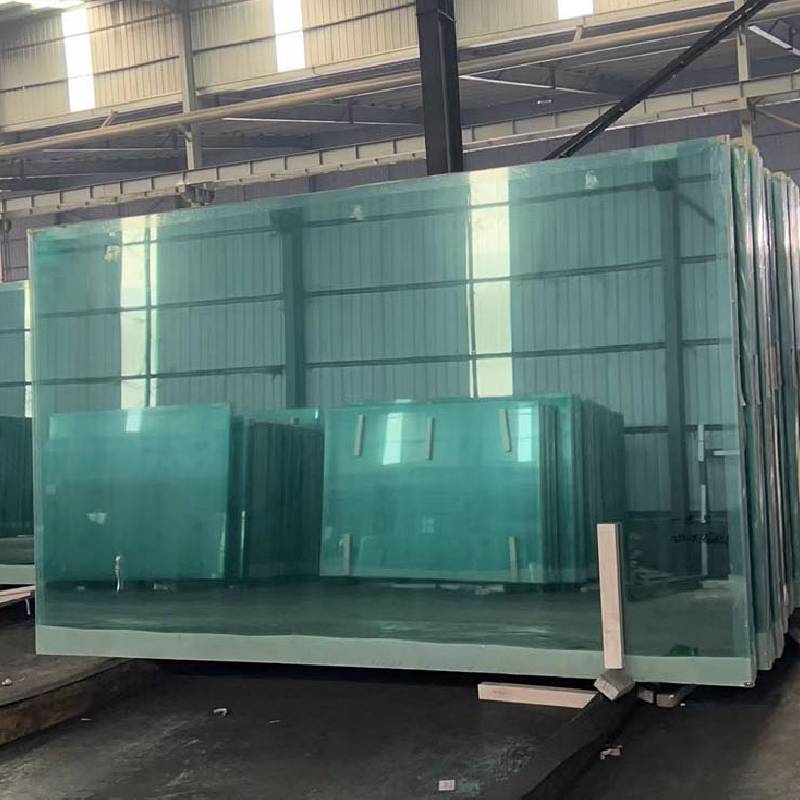The Science and Applications of Heat Treated Float Glass
Float glass, known for its clarity and optical properties, plays a critical role in various industries, from architecture to automotive manufacturing. A significant advancement in the processing of float glass is heat treatment, which enhances its mechanical strength, thermal performance, and safety features. This article explores the processes, benefits, and applications of heat-treated float glass, shedding light on why it has become a preferred choice in modern construction and design.
Understanding Float Glass
Float glass is produced by a method known as the float process, which involves melting raw materials (primarily silica sand, soda ash, and limestone) and floating the molten glass on a bed of molten tin. This method results in a smooth, uniform thickness, and gives the glass its characteristic clarity. However, standard float glass is relatively fragile and can be susceptible to thermal stress and breakage. This is where heat treatment comes into play.
The Heat Treatment Process
Heat-treated float glass undergoes a specific process to improve its strength and thermal stability. There are two primary methods tempering and annealing.
1. Tempering In this process, the glass is heated to a temperature of about 620 to 650 degrees Celsius and then rapidly cooled. This induces compressive stresses on the surface while reducing tension in the core of the glass. As a result, tempered glass can withstand greater impacts than untreated glass and can endure higher temperatures. It is approximately five to seven times stronger than standard float glass.
2. Annealing Annealing involves slowly cooling the glass after it has been formed, relieving internal stresses. While it does not provide the same level of strength as tempering, it increases uniformity and reduces the risk of spontaneous breakage.
Benefits of Heat-Treated Float Glass
Heat-treated float glass has several advantages that enhance its performance and applicability
- Increased Strength The tempering process makes heat-treated glass highly resistant to breaking. In the event of a fracture, tempered glass shatters into small, blunt pieces rather than sharp shards, reducing the risk of injury.
heat treated float glass
- Thermal Resistance Heat-treated glass can endure significant temperature changes without deforming or breaking. This property is especially crucial in environments with fluctuating temperatures, such as in greenhouses or large commercial buildings with extensive glass facades.
- Aesthetic Versatility Heat-treated float glass can be finished in various designs, tints, and textures. It can also accommodate advanced coatings for energy efficiency, contributing to the aesthetic and functional qualities of architectural projects.
- Improved Durability The increased resistance to scratches and impacts makes heat-treated float glass ideal for high-traffic areas, such as shopping malls, airport terminals, and public buildings.
Applications
The robust characteristics of heat-treated float glass render it suitable for a wide array of applications
- Architecture and Building Design It is widely used in facades, windows, and glass doors in both residential and commercial construction. Its ability to withstand wind loads and thermal stress protects the integrity of the building.
- Automotive Industry Tempered glass is commonly employed in automobile windows and windshields due to its strength and safety features. It can withstand the pressures faced during a collision or sudden temperature changes.
- Interior Design Heat-treated float glass is also a popular choice for decorative elements, such as glass partitions, shower doors, and tabletops. Its clarity and finish contribute to modern and elegant interior designs.
- Furniture The strength and aesthetic appeal of heat-treated float glass make it suitable for furniture applications, including dining tables, shelves, and counters.
Conclusion
Heat-treated float glass represents a significant innovation in the glass manufacturing industry, combining aesthetic versatility with superior strength and safety. As demands for durable and appealing building materials increase, the adoption of heat-treated glass continues to rise across various sectors. Whether in architecture, automotive applications, or interior design, its benefits are undeniable, shaping the future of glass utilization in our built environment. As technology advances, further enhancements in the properties and applications of heat-treated float glass are likely, promising even more exciting possibilities for the industry.
 Afrikaans
Afrikaans  Albanian
Albanian  Amharic
Amharic  Arabic
Arabic  Armenian
Armenian  Azerbaijani
Azerbaijani  Basque
Basque  Belarusian
Belarusian  Bengali
Bengali  Bosnian
Bosnian  Bulgarian
Bulgarian  Catalan
Catalan  Cebuano
Cebuano  Corsican
Corsican  Croatian
Croatian  Czech
Czech  Danish
Danish  Dutch
Dutch  English
English  Esperanto
Esperanto  Estonian
Estonian  Finnish
Finnish  French
French  Frisian
Frisian  Galician
Galician  Georgian
Georgian  German
German  Greek
Greek  Gujarati
Gujarati  Haitian Creole
Haitian Creole  hausa
hausa  hawaiian
hawaiian  Hebrew
Hebrew  Hindi
Hindi  Miao
Miao  Hungarian
Hungarian  Icelandic
Icelandic  igbo
igbo  Indonesian
Indonesian  irish
irish  Italian
Italian  Japanese
Japanese  Javanese
Javanese  Kannada
Kannada  kazakh
kazakh  Khmer
Khmer  Rwandese
Rwandese  Korean
Korean  Kurdish
Kurdish  Kyrgyz
Kyrgyz  Lao
Lao  Latin
Latin  Latvian
Latvian  Lithuanian
Lithuanian  Luxembourgish
Luxembourgish  Macedonian
Macedonian  Malgashi
Malgashi  Malay
Malay  Malayalam
Malayalam  Maltese
Maltese  Maori
Maori  Marathi
Marathi  Mongolian
Mongolian  Myanmar
Myanmar  Nepali
Nepali  Norwegian
Norwegian  Norwegian
Norwegian  Occitan
Occitan  Pashto
Pashto  Persian
Persian  Polish
Polish  Portuguese
Portuguese  Punjabi
Punjabi  Romanian
Romanian  Russian
Russian  Samoan
Samoan  Scottish Gaelic
Scottish Gaelic  Serbian
Serbian  Sesotho
Sesotho  Shona
Shona  Sindhi
Sindhi  Sinhala
Sinhala  Slovak
Slovak  Slovenian
Slovenian  Somali
Somali  Spanish
Spanish  Sundanese
Sundanese  Swahili
Swahili  Swedish
Swedish  Tagalog
Tagalog  Tajik
Tajik  Tamil
Tamil  Tatar
Tatar  Telugu
Telugu  Thai
Thai  Turkish
Turkish  Turkmen
Turkmen  Ukrainian
Ukrainian  Urdu
Urdu  Uighur
Uighur  Uzbek
Uzbek  Vietnamese
Vietnamese  Welsh
Welsh  Bantu
Bantu  Yiddish
Yiddish  Yoruba
Yoruba  Zulu
Zulu 

